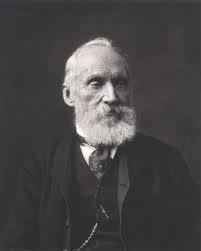Role Physicist | Name Daniel Fahrenheit | |
Parents Concordia Schumann, Daniel Fahrenheit Similar People Anders Celsius, William Thomson - 1st Baron, Evangelista Torricelli, Rene Antoine Ferchault, Ole Romer | ||
Daniel Gabriel Fahrenheit
Daniel Gabriel Fahrenheit (/ˈfaerənˌhaɪt/; [ˈfaːʀənhait]; 24 May 1686 – 16 September 1736) was a German physicist, engineer, and glass blower who is best known for inventing the mercury-in-glass thermometer (1714), and for developing a temperature scale now named after him.
Contents

Daniel gabriel fahrenheit
Biography

Fahrenheit was born in 1686 in Danzig (Gdansk), in the Polish-Lithuanian Commonwealth, but lived most of his life in the Dutch Republic. The Fahrenheits were a German Hanse merchant family who had lived in several Hanseatic cities. Fahrenheit's great-grandfather had lived in Rostock, and research suggests that the Fahrenheit family originated in Hildesheim. Daniel's grandfather moved from Kneiphof in Konigsberg to Danzig and settled there as a merchant in 1650. His son, Daniel Fahrenheit (the father of the subject of this article), married Concordia Schumann, daughter of a well-known Danzig business family. Daniel was the eldest of the five Fahrenheit children (two sons, three daughters) who survived childhood. His sister, Virginia Elizabeth Fahrenheit, married Benjamin Ephraim Krueger of an aristocratic family from Danzig.
Daniel Gabriel began training as a merchant in Amsterdam after his parents died on 14 August 1701 from eating poisonous mushrooms. However, Fahrenheit's interest in natural science led him to begin studies and experimentation in that field. From 1717, he traveled to Berlin, Halle, Leipzig, Dresden, Copenhagen, and also to his hometown, where his brother still lived. During that time, Fahrenheit met or was in contact with Ole Romer, Christian Wolff, and Gottfried Leibniz. In 1717, Fahrenheit settled in The Hague as a glassblower, making barometers, altimeters, and thermometers. From 1718 onwards, he lectured in chemistry in Amsterdam. He visited England in 1724 and was the same year elected a Fellow of the Royal Society. Fahrenheit died in The Hague and was buried there at the Kloosterkerk (Cloister Church).
In 2012, scientists made a computer image of his face using photos of his relatives.
Fahrenheit scale
According to Fahrenheit's 1724 article, he determined his scale by reference to three fixed points of temperature. The lowest temperature was achieved by preparing a frigorific mixture of ice, water, and ammonium chloride (a salt), and waiting for it to reach equilibrium. The thermometer then was placed into the mixture and the liquid in the thermometer allowed to descend to its lowest point. The thermometer's reading there was taken as 0 °F. The second reference point was selected as the reading of the thermometer when it was placed in still water when ice was just forming on the surface. This was assigned as 32 °F. The third calibration point, taken as 96 °F, was selected as the thermometer's reading when the instrument was placed under the arm or in the mouth.
Fahrenheit came up with the idea that mercury boils around 300 degrees on this temperature scale. Work by others showed that water boils about 180 degrees above its freezing point. The Fahrenheit scale later was redefined to make the freezing-to-boiling interval exactly 180 degrees, a convenient value as 180 is a highly composite number, meaning that it is evenly divisible into many fractions. It is because of the scale's redefinition that normal body temperature today is taken as 98.2 degrees, whereas it was 96 degrees on Fahrenheit's original scale.
Until the switch to the Celsius scale, the Fahrenheit scale was widely used in Europe. It is still used for everyday temperature measurements by the general population in the United States.
